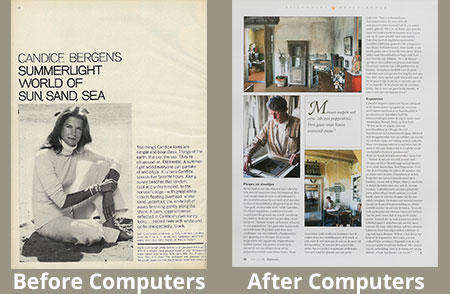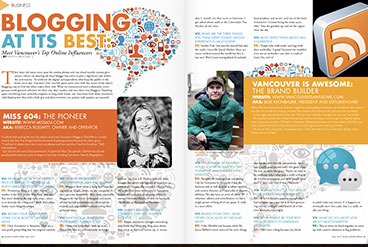Making it easier to publish written work

With the advent of computer technology and with the expansion of new mediums, the message of the written work changed. Marshall McLuhan states in The Medium is the Massage, that each generation will grow and change from the use of technologies presented to them, and by this humanity evolves. As our culture changes and evolves, we expect the mediums to change in order to accommodate us. When one explores what it took to publish work before computers, compared to that process now, with the aid and use of computer and internet technologies is an excellent example of this evolution.
Prior To Desktop Publishing

Before computers, much time was required to create anything to be published, because of the amount of work was considerably involved and required several skilled people working on it, producing work to be published as a physical and manual process that took different specialists to produce any piece of work (“Graphic Means”). Someone would have to create a paper layout physically, called a mechanical. They would have to work with a photographer or an illustrator to create the images. The photographer or illustrator would then provide the images or illustrations they were directed to produce in the exact sizes required for the layout. A paste-up artist would then use tools to measure, cutting and pasting the layout together. To create the copy or text on the page, they had to measure the space the text would be going in, and then decide what fonts, sizes and leadings would work best for all the different areas of text. This information would be handed over to a typesetter. The typesetter would create all the lines of text content and deliver it back for placement in the mechanical. There was also something called Lettrasets available—rub-on letters, symbols, decorations, and simple graphics that could be used to enhance a layout. Once the layout for the written publication was complete, an overlay had to go on top to give the printer a set of instructions for colors, varnishes, and any other specifications for printing the work. Because of the manual and time-consuming process to produce the work, there tended to be less emphasis on flashy or layered visuals, and more emphasis was on the written words or content itself. As a result, layouts were a lot more simplified, especially when compared to what we saw once computer technology came into play.
Desktop Publishing
With the development of the personal computer, came new software and the dawn of desktop publishing. Desktop publishing empowered individuals at home and in small businesses with the ability to create and deliver their published work by creating it themselves, with the new computer technologies now available to them. However, making the transition from the old manual process of publishing to the digital one required considerable investment in time and resources to purchase the equipment, software and to acquire these new skills.
Software and Fonts
Desktop publishing involved not only learning how to use a computer, but how to use all the new software tools available as well. Programs like Aldus Freehand, Aldus Pagemaker, Adobe Illustrator, and Adobe Photoshop were all individual programs that someone had to purchase for creating compositions and graphics. Fonts were now available to be chosen and used with these programs. These were limited, and the process of choosing and using fonts was still slower than it is today. Each font was expensive, and there were licenses with restrictions on their uses.

Working with Graphics
Including graphics or photos in the work to be published, still required one to hire a photographer or an illustrator. These professions, however, were also being shaped with this new technology. The photos and illustrations were digitally scanned and placed in the electronic layouts. Once these digital files finalized, they then had to be sent, by disk, to a prepress specialist that would process the work and create film separations for the printer to use. Most printing still had to be done on offset or web printing presses, which required the production of plates and press checks are done, to make sure printing was in registration, and the colors were correct. The process to get the work published was still expensive, but it took less production time, and fewer people were needed to produce the final printed work.
Digital Publishing
Now, with the modern age of digital publishing, we can create so much more content than any other time in history. It has sped up the process of publishing written work. Type and images can be put together almost effortlessly by being able to download resources from the internet (“Galarraga”). Modern technologies have made it possible to make iterations of written work for each intended audience quickly. They have also brought us new mediums to use for creating and publishing.
Modern computer technology has also made it easier to publish written work to share with others. Especially now, with the ability to create content online, it can be shared with the entire world. However, there is still the challenge of reaching the desired audience and building up readership. Now online content has to be written with search engine optimization in mind so that the content will show up higher in search results, and therefore increase the chance of reaching the writer's target market. With pretty much anyone able to upload their written content to share, there is an overabundance of written information. The overabundance of published work has made it so that the viewers must filter what they want to read and the writer must learn how to get their written work to stand out of the crowd.


